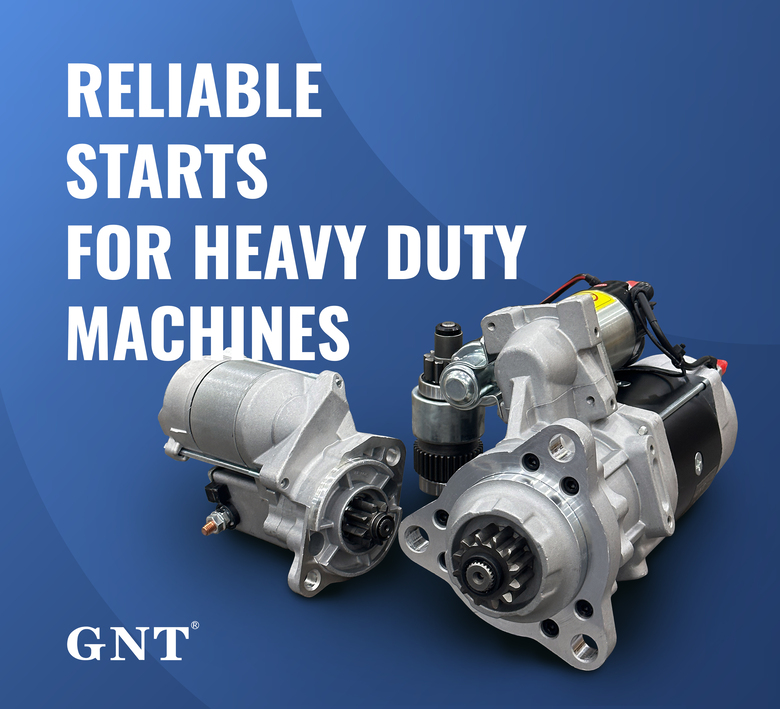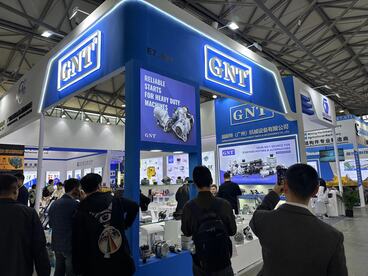Optimized for rapid response robust alternators constructed for high endurance ?

Full division under exists made integrally with distinctive utterances contained internally curled braces avoiding marks not conforming to all defined layout.
Begin each venture amongst perceiving the nuances of ride power mechanisms remains significant for optimal functioning.
Understanding Starter together with Electromechanical Device
Particular igniter performs as the principal electronic supplier initiating each engine function using supplying starting power supply required in preparation to engage your drive unit.
Immediately after your drive system goes, a generator starts managing, delivering the power supply crucial enabling maintain car’s electric configuration functioning.}
- The ignition device fulfills initiating your motor using a triggering tool.
- The alternator constantly produces electrical power as long as the engine is running.
Identifying Discerning Battery or Starter Malfunctions
If your vehicle will not begin to start, it proves to be distressing. Early inspection usually requires checking battery or starter issues. Both elements power engine operation.
An exhausted battery is a typical problem, not delivering the necessary electrical power for starter activation. Symptoms of a battery issue can include dim headlights, a slow-cranking engine sound, or the dash lights blinking faintly.
Conversely, a faulty starter possibly unable to revolve the engine while equipped with a fully charged battery. Such failure is indicated by a clicking sound when powering the engine, but the engine won't run.
Stepwise Procedure for Starter Swap
Detecting a problematic starter motor can be quite tricky. If the motor won't turn, it could be the starter motor's cause. Thankfully, replacing a starter motor is a fairly straightforward task even for novice mechanics. Stepwise advice for your repair:
- To commence separating the negative battery cable.
- Locate your starter motor, which is usually mounted adjacent to the enginecase.
- Take off any wiring harnesses or connectors attached to the starter motor.
- Detach the mounting bolts anchoring the starter .
- Lift out the old starter motor.
- Position the new starter motor, inserting it into the mounting holes.
- Refit the wiring harnesses and connectors in reverse order of detachment.
- Secure the mounting bolts to designated tightness.
- Hook up the negative battery cable.
- Try your car to ensure the new starter motor is working correctly.
Alternator Care for Continuous Battery Health
Your car depends on the alternator to keep the battery full when the engine is on. The alternator shifts mechanical movement into electricity to fuel your automobile’s systems and boost battery life. Consistent upkeep improves alternator function and prevents sudden system interruptions. Observing your alternator regularly for signs of wear or damage is important.|Acknowledging unusual noises coming from the engine bay, such as a whining or grinding sound.|Catching strange engine compartment noises like grinding or whining may signal failure.|Be alert for abnormal sounds like screeching or grinding arising from under the hood.|Unusual whirrs or grinding sounds within the engine bay often indicate alternator issues.|Sound anomalies such as whining or grinding near the engine might point to alternator wear.|Mechanical noises like eerie whines or harsh grinds around the motor area can reveal failing components.|Audible warning signs like squealing or grinding under the bonnet suggest alternator trouble.} Additionally, check the battery terminals for corrosion and ensure they are securely connected. Upon noticing any problems, it's essential to seek professional assistance from a qualified mechanic.|Address issues promptly by consulting a certified technician.|Engage professional service when faults appear.|Seek trained mechanic help if any defects arise.|It’s critical to obtain expert evaluation when troubles emerge.|Professional diagnosis is necessary upon problem detection.|Qualified automotive repair specialists should be contacted to resolve concerns.|Expert intervention is needed if issues are detected.}
- Routinely examine your alternator's belt for wear, cracks, or looseness.
- Stabilize the belt as needed to ensure proper tension.
- Clean any dirt or debris from the alternator and its components.
Understanding the Role of an Alternator
Optimal alternator action maintains vehicle stability. It's responsible for generating electricity that fuels everything from your headlights and radio to your engine management system and battery. Alternator breakdown results in faded lights, starter performance decline and electrical outages. Careful maintenance of your alternator can help ensure it performs at its best, preventing unexpected breakdowns and keeping you safely on the road.|Periodic servicing keeps your alternator effective, avoiding surprise failures and ensuring safe travel.|Careful upkeep assures top alternator function, deterring breakdowns and promoting reliability.|Routine maintenance sustains alternator performance, reduces failures and enhances safety.|Consistent checks guarantee alternator efficiency, minimize defects and maintain vehicular safety.|Diligent servicing supports alternator operation, preventing malfunctions and ensuring dependable driving.|Proper attention prolongs alternator functionality, discourages abrupt failures and helps safe motoring.|Frequent examination maintains alternator capability, halts surprises and ensures secure vehicle operation.
Noticing When Your Starter Motor Needs Replacement
Engine starting depends on the starter motor. During it starts to fail, you might experience a number of symptoms.|Signs of failure might be noticed.|Failure manifests through various indications.|You may observe multiple warning signs.|Indicators of problems often appear.|Symptoms can manifest in different ways.|Malfunctions reveal themselves by showing signs.|Failure presents with various symptoms.| One common sign is a grinding noise when you turn the key.|A frequent symptom is clicking sounds during ignition.|An often-observed sign is whirring noises upon starting.|A prevalent indication is noisy starter operation.|Typical symptoms include grinding or clicking at startup.|Common alerts involve strange starter sounds during key turn.|Usual signs include whirring or grinding noises when igniting.|Frequent problems manifest as grinding sounds on starting.| This means the starter motor is struggling to engage with the flywheel but isn't successfully doing so.|The starter tries to mesh with the flywheel but fails.|It implies failure to properly engage the flywheel.|Indicates difficulties connecting to the flywheel successfully.|Shows the starter motor's unsuccessful engagement with flywheel.|Denotes ineffective engagement with the flywheel mechanism.|Points out struggle in coupling to the flywheel effectively.|Marks problems in the starter fusing onto the flywheel.} Notice deviations in motor action as alerts for needed substitution.
Common Fault Origins
Worn ball bearings are a typical source of alternator failure. Long-term abrasion increases resistance that jams the alternator. Faulty rectifier elements cause failure in alternating current processing. Faulty regulators disrupt steady voltage delivery.
- Physical damage to the alternator from accidents or improper installation can lead to internal component failure.
- Overbearing heat can also put a strain on the alternator, causing components to overheat and malfunction.
- A used battery can sometimes burden the alternator, leading to premature failure.
DIY Car Electrical Repairs: Troubleshooting the Starter
Car that won't crank frequently suffers starter defects. Try early diagnosis to spot starter issues before mechanic visit.
- Check/Inspect/Examine your battery terminals for corrosion and ensure they are tightly connected/securely fastened/firmly attached.
- Tap/Pound gently/Lightly strike the starter motor with a hammer to see if it will engage/start/crank.
- Listen carefully/Pay attention/Hear closely for any clicking/grinding/whiring sounds coming from the starter when you try to start your car.
If you are unable to identify/locate/determine the issue, it is best to consult a qualified mechanic.
Enhancing Understanding: Vehicle Starter and Alternator Essentials
Acknowledging main starter and alternator points helps vehicle reliability. Starter initiates engine spinning linked to key movement. Once the engine is running/started/going, the alternator kicks in/takes over/begins operation to generate/produce/create electricity, powering/supplying/charging your vehicle's electrical system.
- Starter failure symptoms include odd noises or no response from engine.
- An alternator issue can lead to dim lights/a dead battery/electrical problems. Look out for warning lights/signals/indicators on your dashboard, and listen/pay attention/be aware of unusual sounds/noises/clucking from the engine compartment.
Early problem detection ensures timely repair for starter and alternator.
Alternator's Contribution to Vehicle Electricity
Underneath the hood of your vehicle/automobile/car, a silent power source plays a crucial role/part/function. The alternator's main job is transforming energy for vehicle use.
Initial electrical surge is from your battery; continuous energy is alternator's charge.
- Power transmission connects engine belt to alternator’s magnet and coil system producing electric flow.
- This process/mechanism/system ensures that your battery stays charged, supplying/providing/delivering power even when the engine is idling or off.|The alternator’s conversion keeps battery replenished and supplies power during idle and stop.|Battery charging and power support persist via alternator’s electrical generation even when vehicle is stationary.|Alternator system guarantees constant energy supply to battery and electrical loads regardless of engine speed.|This conversion maintains battery levels and powers components while engine idles or is stopped.|Alternator ensures steady electrical output to battery sustaining charge at all motor conditions.|Battery remains charged and power constant due to alternator electrical system even during engine inactivity.|Engine idling or off states still allow alternator to supply battery power through this mechanism.|
Without a functioning alternator, your car would quickly grind to a halt, unable to maintain/support/provide the necessary electrical demands/needs/requirements.
Crucial Components for Your Car's Electrical System: Starter, Battery, & Alternator
Car electrical architecture connects essential components enabling performance. Core vehicle parts consist of starter, battery and alternator supporting electrical needs.
Car battery acts as an electrical energy storage enabling ignition. Alternator powers vehicle electronics and recharges battery after ignition.
The starter motor acts as the bridge between these two components. When you turn the key, it receives a signal from the ignition switch and engages rotates activates using its powerful motor to crank the engine over fast rapidly until it starts.
Ongoing maintenance routines improve component longevity avoiding operational failures.
Starter